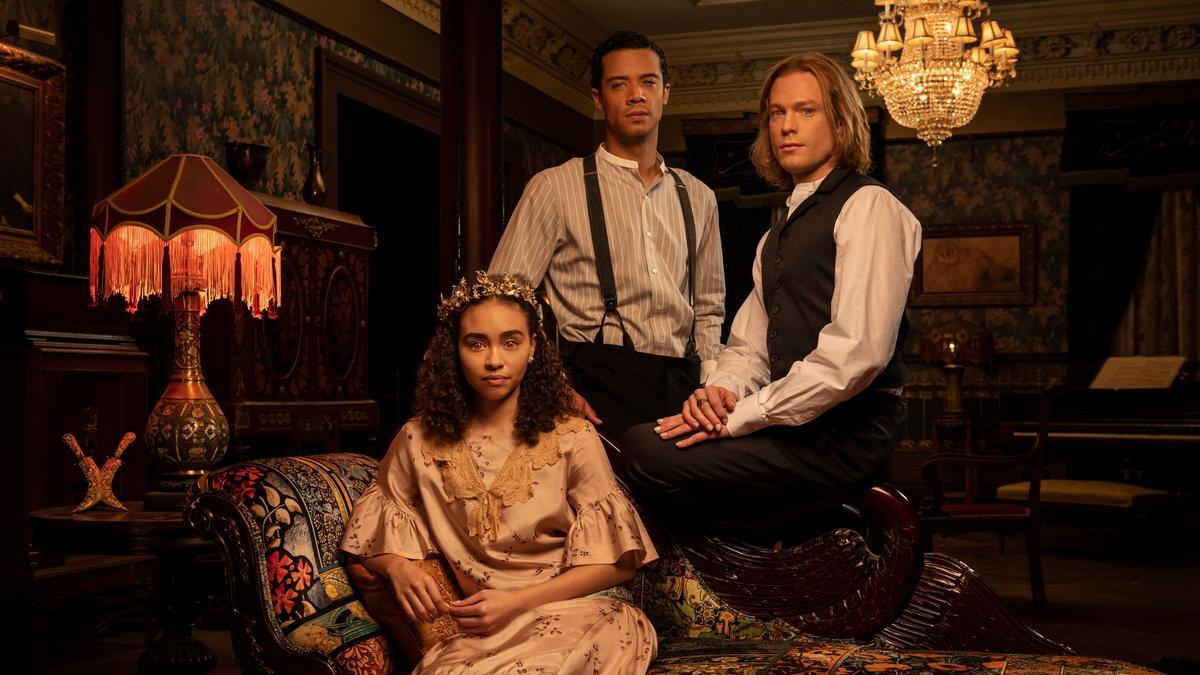
Anne Rice’s “Interview with the Vampire” (IWTV) has long been a seminal work in how audiences perceive the vampiric archetype. Over the years, Rice’s portrayal transformed the vampire from a terrifying monster into a seductive and enthralling spectacle. Notably, her vampires were queer, at least in the subtext, making them even more captivating to readers. AMC’s latest adaptation of Rice’s novel introduces numerous updates to its settings and characters, bringing fresh perspectives to the table. Set in early 20th-century New Orleans instead of 18th-century Louisiana, the show follows Louis de Pointe du Lac, a Black vampire, diverging from his original background as a plantation owner.
In its first season, these alterations were skillfully woven into the narrative, not just as token representations but as integral aspects that deepen the characters’ internal lives. The second season, which recently concluded with eight riveting episodes, serves as a perfect follow-up. The script is more biting, the dalliances in the streets of Paris and San Francisco are more feisty, and the new vampire theatre troupe adds a layer of delicious drama. Season two of IWTV is a bloody feast for fans to relish.
The second season picks up right where the first left off, giving the audience a moment to digest the startling revelation that ‘Rashid’ is actually Armand (played by Assad Zaman), an ancient vampire and Louis’ (Jacob Anderson) long-time companion. Armand’s more publicly equal role next to Louis introduces a new dynamic. Meanwhile, journalist Daniel Molloy (Eric Bogosian) resumes his interview with fresh disdain, now aware of the deception about Armand’s true identity.
This season’s narrative hinges on familiar characters adapting to new roles. The evolving relationship between Louis and Armand is now under the microscope, and Daniel takes a trip down memory lane to when he first met Louis in San Francisco. Concurrently, Louis’ tale, as narrated to Daniel, transitions to Europe just as World War II winds down. Here, Louis is plagued by heartache, having nearly, but not quite, killed Lestat. He roams the European countryside with Claudia (Delainey Hayles) in search of other vampires. Although Lestat is absent, his presence lingers in Louis’ mind, haunting him with the same intensity. Sam Reid’s portrayal of Lestat, with his dramatic flair, remains as captivating as ever, despite fleeting appearances.
The interview between Louis and Daniel spans just under two weeks but navigates through three vastly different timelines. Besides recounting his 1940s Paris encounter with Armand, the narrative also revisits their initial interview session in 1973.
. All these flashbacks unfold within the cold, sterile interiors of Louis’ modern Dubai apartment in a post-COVID world. The ambitious decision to juggle these timelines pays off brilliantly, almost akin to Armand’s theatrical productions at the Théâtre des Vampires in Paris. The constant shift between horror, heartbreak, and amusement keeps the audience perpetually engaged.
Without Lestat to guide him through vampirism and queerness, Louis seeks a fresh start in Paris, where he finds himself more readily accepted in a new social order less preoccupied with the color of his skin. He takes to Armand and photography with ease. Likewise, Claudia relishes her newfound vampire family, fulfilling her teenage impulse for ruthless hunting. Delainey Hayles steps into Claudia’s role with a different kind of fury, befitting a character who has spent decades trapped in vampire adolescence. Despite her disappointment in Louis, she remains loyally by his side, and Jacob Anderson portrays Louis with exquisite restraint.
However, the peace among vampires is short-lived. Louis’ quest for freedom ruffles feathers within Armand’s coven, led stylishly by Santiago (Ben Daniels). The latter half of the season peels back the layers of these glamorous characters, exposing more humanistic vampires. Though they possess superhuman abilities – lightning speed, flight, and formidable strength – they are ultimately slaves to their basic human emotions: hunger, loneliness, jealousy, anger, and guilt. IWTV authentically captures what its characters aspire to be, diverging from their original portrayals in Rice’s books. This confident writing allows the show to embrace both its profound moments and the more outlandish elements – like the colored contact lenses reminiscent of the 1994 film starring Brad Pitt and Tom Cruise.
The vampires’ fleeting grasp on humanity, continually eroded by their own lack of control, makes IWTV an engrossing watch. The script adeptly balances the grandeur of vampire feats with more sorrowful events, infusing a thrilling dynamic. Eric Bogosian’s portrayal of Daniel punctures the vampires’ self-importance with human cynicism, adding balance to the narrative.
“Interview with the Vampire” propels the vampire genre far beyond what Anne Rice envisioned, bringing it full circle to expose the human essence within these immortal beings. As Nina Auerbach stated in her book “Our Vampires, Ourselves”: “Every age embraces the vampire it needs.” In an era flooded with derivative content, the television landscape is fortunate to unearth something original from a 1976 novel.
All episodes of “Interview with the Vampire” are available for streaming on Amazon Prime Video.












